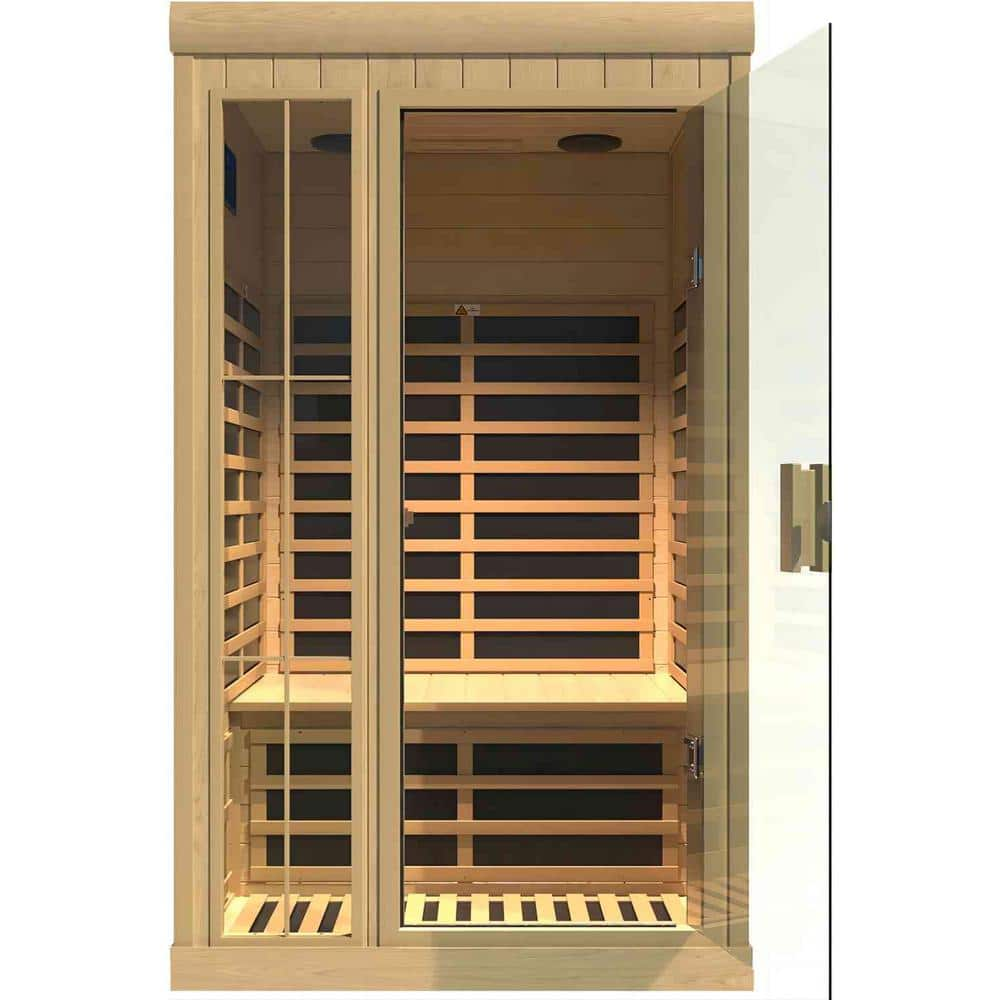Xspracer Moray 1-2 Person Hemlock Sauna with 7 Far-infrared Carbon Crystal Heaters and Chromotherapy
Home sauna with built-in carbon crystal adjustable temperature heating panel, 1350W power, 10-15 minutes quick preheat, maximum temperature up to 65°C/149°F, soothes muscle and joint pains, soothes the body by heating up the core temperature, relaxes the muscles, relieves joint pains, heats up in all directions, provides stable heat for the whole body.
Create your own spa experience with this Xspracer mini Hemlock sauna. You can install it anywhere indoors and burn up to 600 calories in 30 minutes. With health in mind, you can boost your immune system, improve circulation, help clear cellulite, improve skin tone, and remove toxins and waste products. Symptoms of insomnia, depression, limb pain and joint pain improve, and then need to relieve stress and fatigue. Open clogged pores, expel toxic substances, promote blood circulation, improve dark yellow skin, slim.
- Far infrared heating – home sauna with built-in carbon crystal adjustable temperature heating panel, 1350W power, 10-15 minutes quick preheat, maximum temperature up to 65°C/149°F, soothes muscle and joint pains, soothes the body by heating up the core temperature, relaxes the muscles, relieves joint pains, heats up in all directions, provides stable heat for the whole body
- Ideal wood, easy to assemble- made from Canadian hemlock wood, which is anti-scarring and hypoallergenic, it is the ideal wood for sauna construction to keep the heat inside the sauna, the tongue and groove design facilitates quick assembly and can be easily assembled in less than 30 minutes
- App remote control – by linking the control panel through the App, you can set the time, temperature and audio system freely with your cell phone, built-in 7 carbon crystal far infrared low EMF heating panels, 2 12V 4 in. music speakers, which can be easily controlled by bluetooth connection with your smartphone
- 1 to 2 persons size – sauna size: 40.2 x 35.83 x 75.6 in., can be used by 1-2 people at the same time space, perfect for your master bathroom, bedroom, basement or gym, allowing you to enjoy the health benefits of regular sauna use in the comfort of your home
- Foot reflexology heater for the ultimate detox and therapy experience
- Infracolor chromo therapy light system
- Fresh air vent for optimum air circulation
- Tempered glass door and glass side windows create an open feel
- Easy clasp together assembly
- Installs anywhere indoors not suitable for outdoor installation
- Power plug: American standard
- Rated power: 1350W
Additional information
| Interior Depth (in.) | 36 |
|---|---|
| Interior Height (in.) | 71 |
| Interior Width (in.) | 33 |
| Product Depth (in.) | 39 |
| Product Height (in.) | 75 |
| Product Width (in.) | 35 |
| Manufacturer Warranty | 1 Year Limited |






Reviews
There are no reviews yet.